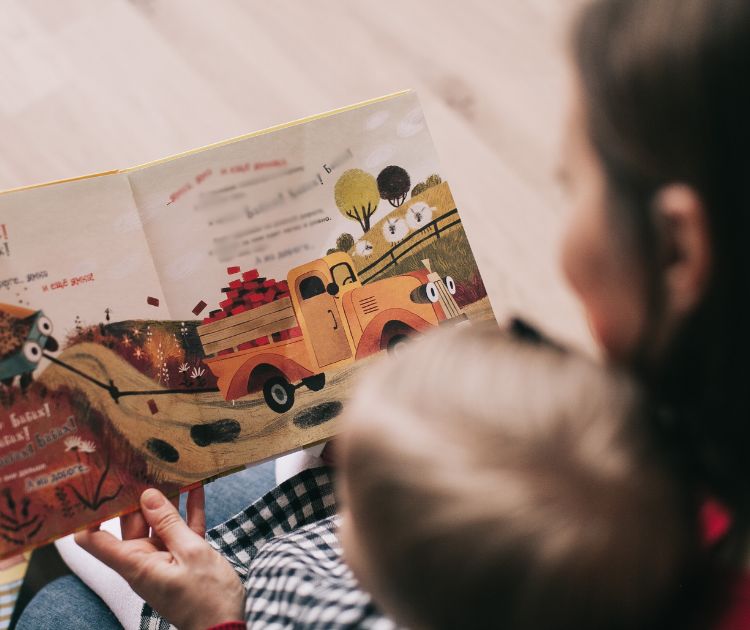How to help a child sleep in their bed peacefully?

Helping a child sleep peacefully in their bed
Establishing a regular bedtime routine is essential to help your child recognize that it's almost time to sleep. Discover in this article simple tips to establish this habit with peace of mind.
How to prepare your child to sleep alone?
Establishing a bedtime routine
Establishing a consistent bedtime routine is essential to help your child understand that bedtime is approaching. It starts with activities repeated every evening: a warm bath, a cuddle, and a gentle story. These elements create a sense of security and prepare the body and mind for sleep.
Create simple but meaningful rituals. For example, singing a lullaby or using a specific comfort toy can become a comforting symbol for the transition to bed. Consistency is key: regular schedules promote the production of melatonin, the sleep hormone.
Add soothing touches like soft music or a nightlight with dimmed light. These small gestures help your child associate their sleeping space with a calm and reassuring environment.
To help you find your rhythm, use our dedicated guide.

Creating a peaceful sleep environment
Room arrangement
The arrangement of the room plays a crucial role in sleep quality. A well-organized room with decor tailored to your child's tastes can transform their bed into a welcoming place. Consider incorporating soft colors and personalized elements, such as stickers or photo frames.
Invest in comfortable bedding suitable for your child's age and development. A crib or a small bed with soft sheets can make all the difference. The ambiance should be soothing: avoid bright lights and choose blackout curtains to block any external light sources.
Don't forget to add familiar objects such as a stuffed animal or their favorite blanket. These elements provide emotional comfort while reinforcing the feeling of security in their own space.
Our techniques against night wakings
Gentle management of night wakings
Night wakings are common in children, but it's important to respond calmly and patiently. When your child wakes up, gently return them to their child's bed without excessive interaction. Speak to them in a soothing voice to avoid completely interrupting their drowsy state.
Adopt a consistent approach to nighttime reactions. For example, if you help your child fall back asleep by simply staying beside them for a few minutes, do it systematically without prolonging this moment.
Establish clear expectations from the start: explain that night is for sleeping. This positive reinforcement will help give them confidence in their ability to spend a peaceful night in their own space.
The transition from co-sleeping to a child's bed

A gradual transition
Moving from co-sleeping to an individual bed can be tricky, but this change can be made gradually and kindly. Start by setting up your child's bed in your room so they can get used to this space while staying close to you.
Take the necessary time for this transition. Each child evolves differently; some may quickly adopt this new method while others require more parental support. Be attentive to emotional signals and adjust your actions according to their needs.
Proceed step by step, gradually moving the bed towards their own room. Transform each success into a positive shared moment, thus reinforcing their resilience to change.
To reassure them during this transition, you can also opt from birth for a convertible baby bed that they can keep until they are 6 years old and associate with a space of trust.
Strategies for encouragement and positive reinforcement
Encouragement techniques
Use encouragement to motivate your child to love their personal bed. Reward their efforts with positive words or small symbolic surprises that mark their progress towards nighttime autonomy.
Show them that sleeping alone is a source of great pride! Highlight their successes while emphasizing how it contributes to their healthy and balanced development.
Also share inspiring examples: "Remember when you were proud of learning something new? It's the same with your new bed!" This positive association can reinforce their efforts while creating a lasting sense of accomplishment.
Overcoming night fears and anxieties
Easing fears
Night fears are normal in young children and should be treated with empathy. Explain to them that their feelings are legitimate while offering constant and reassuring support.
Try techniques like guided relaxation: take deep breaths together or offer them a comforting hug before they return to their bed. Simple words like "I'm here if you need me" can have a huge effect on their confidence.
Be compassionate in your approach: offer a nightlight projecting soft images or invent together a story where they overcome their fears thanks to their natural courage.
The importance of a positive and consistent approach
Adopting a long-term perspective
Perseverance is essential to achieve lasting results when it comes to infant sleep. Accept that this transition takes time and a lot of patience; every progress, even minimal, deserves to be celebrated!
Consistency remains fundamental throughout the process: maintain your habits even in the face of unexpected challenges while valuing every small victory achieved by your child thanks to unconditional parental support.
Always keep in mind the ultimate goal: providing a framework filled with love where they feel capable of facing this important step towards more personal autonomy - all in a serene spirit focused on their overall well-being!













 Choosing the right baby blanket dimensions according to season and age
Choosing the right baby blanket dimensions according to season and age
 How to attach a headboard (with or without drilling): quick and effective soluti
How to attach a headboard (with or without drilling): quick and effective soluti
 Waterproof sheet or mattress protector: the best solution by age group
Waterproof sheet or mattress protector: the best solution by age group
 27 Original, Useful, and Trendy Christmas Ideas for Teens 2025
27 Original, Useful, and Trendy Christmas Ideas for Teens 2025
 Christmas Activities for Baby: Creative Ideas for Home & Daycare
Christmas Activities for Baby: Creative Ideas for Home & Daycare







